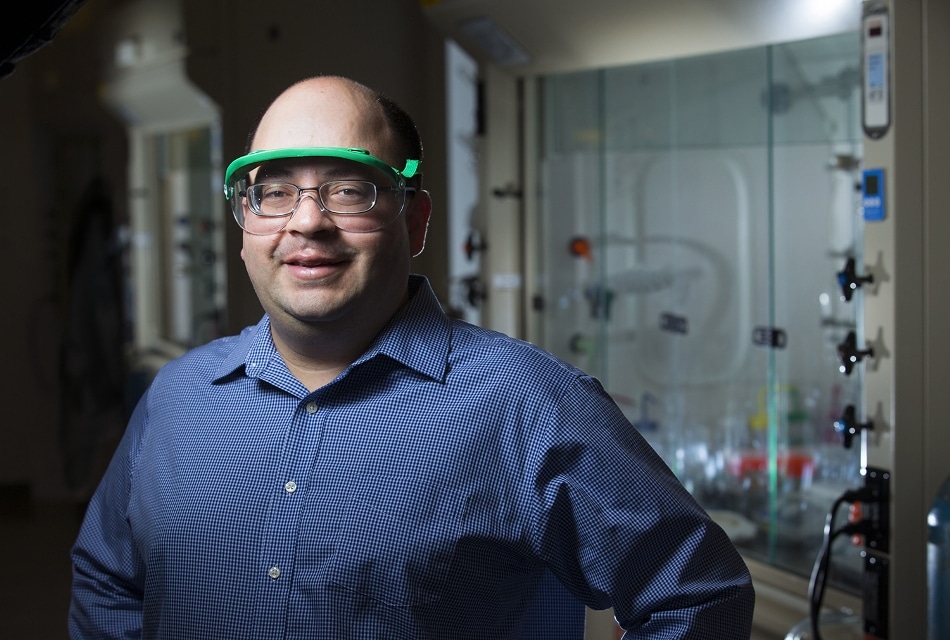Mar 29 2018
Javier Vela and the chemists in his Iowa State University research group faced an issue wherein a toxic material performed very well in solar cells.
 Javier Vela and the chemists in his research group have been working to produce semiconductors from materials that are safe, abundant and inexpensive to manufacture. (Image credit: Christopher Gannon/The College of Liberal Arts and Sciences)
Javier Vela and the chemists in his research group have been working to produce semiconductors from materials that are safe, abundant and inexpensive to manufacture. (Image credit: Christopher Gannon/The College of Liberal Arts and Sciences)
Therefore, any substitute for the lead-containing perovskites used in various solar cells would have to certainly perform. But what could they find to swap the perovskite semiconductors that have been full of potential and highly efficient at converting sunlight into electricity?
What materials could create semiconductors that functioned just as well, but were safe and plentiful and economical to manufacture?
Semiconductors are everywhere, right? They’re in our computers and our cell phones. They’re usually in high-end, high-value products. While semiconductors may not contain rare materials, many are toxic or very expensive.
Javier Vela, Associate Professor of Chemistry
Vela, an Iowa State associate professor of chemistry and an associate of the U.S. Department of Energy’s Ames Laboratory, directs a lab that concentrates on creating new, nanostructured materials. While thinking about the issue of lead in solar cells, he found a conference presentation by Massachusetts Institute of Technology researchers that advocated probable substitutes for perovskites in semiconductors.
Vela and Iowa State graduate students Bryan Rosales and Miles White decided to concentrate on sodium-based alternatives and began an 18-month search for a new kind of semiconductor. The project was supported by Vela’s five-year, $786,017 CAREER grant from the National Science Foundation. CAREER grants are the foundation’s most prestigious awards for early career faculty.
They developed a compound that features sodium, which is inexpensive and abundant; bismuth, which is somewhat scarce but is overproduced while mining for other metals and is economical; and sulfur, the fifth most common element on Earth. The team reports their discovery in a paper recently published online by the Journal of the American Chemical Society.
The paper’s subtitle is an apt summary of their work: “Toward Earth-Abundant, Biocompatible Semiconductors.”
“Our synthesis unlocks a new class of low-cost and environmentally friendly ternary (three-part) semiconductors that show properties of interest for applications in energy conversion,” the chemists wrote in their paper.
In fact, Rosales is aiming to build solar cells that use the new semiconducting material.
Vela said differences in synthesis – changing reaction time and temperature, selection of metal ion precursors, adding certain ligands – allow the chemists to manipulate the size of its nanocrystals and the material’s structure. And that allows the researchers to alter and tweak the material’s properties.
Several of the material’s properties are already suitable for solar cells: The material’s bandgap – the amount of energy essential for a light particle to push an electron loose – is perfect for solar cells. The material, in contrast to other materials used in solar cells, is also stable when exposed to water and air.
So, the chemists think they have a material that will function well in solar cells, but without the costs, toxicity, or scarcity.
“We believe the experimental and computational results reported here,” they wrote in their paper, “will help advance the fundamental study and exploration of these and similar materials for energy conversion devices.”